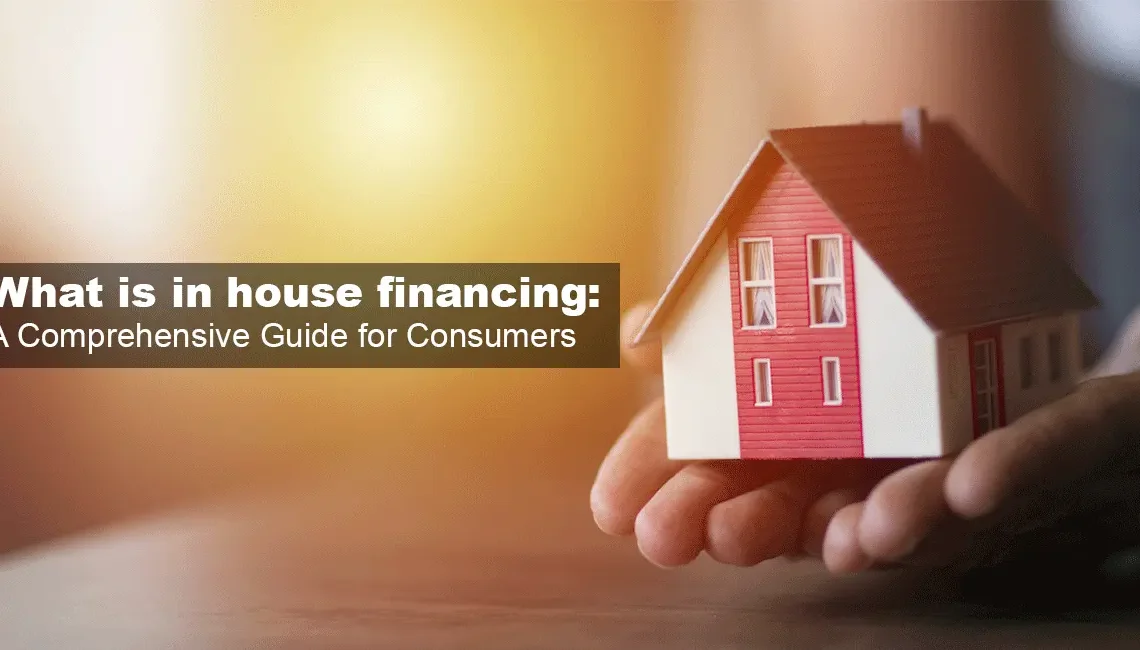In-house financing is a term often heard in the world of consumer finance, but what does it really mean? In simple terms, in-house financing refers to a financing option offered directly by a seller or service provider, allowing consumers to make purchases and pay for them over time, typically through installment payments. This comprehensive guide will explore the concept of in-house financing, how it works, its advantages and disadvantages, and key considerations for consumers.
What is In-House Financing?
In-house financing, also known as dealer financing or seller financing, is a financing arrangement where the seller of a product or service provides credit to the buyer, allowing them to make purchases without the need for a third-party lender. This type of financing is commonly offered by retailers, car dealerships, healthcare providers, and other businesses that sell high-value goods or services. In-house financing arrangements may involve various terms and conditions, including interest rates, repayment periods, and eligibility criteria.
How Does In-House Financing Work?
The process of in-house financing typically begins when a consumer expresses interest in purchasing a product or service from a seller that offers financing options. The seller then assesses the consumer’s creditworthiness and determines whether they qualify for financing. If approved, the consumer may be required to make a down payment or pay an initial fee, after which they can take possession of the purchased item or receive the service.
The consumer then agrees to repay the remaining balance over a specified period, usually through monthly installment payments. The terms of the financing agreement, including the interest rate and repayment schedule, are outlined in a contract signed by both parties. Once the consumer fulfills their repayment obligations, they own the item outright.
Pros & cons of in house financing
Pros:
- Accessibility: In-house financing may be more accessible to consumers with limited or poor credit history, as sellers may have more flexible eligibility criteria compared to traditional lenders.
- Convenience: In-house financing allows consumers to complete the purchase process quickly and conveniently, often without the need to visit a separate financial institution or apply for a loan.
- Negotiation Potential: In-house financing offers consumers the opportunity to negotiate terms and conditions directly with the seller, potentially securing more favorable terms compared to third-party lenders.
- Faster Approval: In-house financing arrangements typically involve a simpler application and approval process, enabling consumers to obtain financing more quickly and easily.
Cons:
- Higher Interest Rates: In-house financing arrangements may come with higher interest rates compared to traditional loans, resulting in higher overall costs for the consumer.
- Limited Options: Sellers offering in-house financing may have limited financing options available, restricting consumer choice and potentially leading to less favorable terms.
- Lack of Transparency: Some in-house financing agreements may lack transparency, making it difficult for consumers to fully understand the terms and conditions of the financing arrangement.
- Potential for Predatory Practices: In-house financing arrangements may be associated with predatory practices, such as hidden fees, aggressive sales tactics, and misleading advertising, which can harm consumers.
Should I Consider In-House Financing?
If you’re facing an immediate purchase and have worries about your credit score or previous financing options have fallen through, in-house financing might be an option worth considering. This route could be advantageous, especially if you’re in a situation where waiting isn’t feasible, such as during emergencies or urgent needs.
However, it’s worth exploring other avenues too. You can still assess your credit score and explore options with traditional financial institutions, which might offer more favorable terms. Waiting or exploring alternative financing methods could result in better interest rates, particularly if you can afford to delay your purchase.

How to Qualify for In-House Financing?
To qualify for in-house financing, several factors come into play. Firstly, maintaining a good credit score can enhance eligibility and result in better terms. Additionally, having a stable income is often a prerequisite, ensuring borrowers can meet repayment obligations. Some arrangements may necessitate a down payment or upfront fee to secure financing. Furthermore, providing documentation like proof of income, identification, and residency is typically required for qualification. These factors collectively influence the approval process for in-house financing options.
How to Secure In-House Financing
To obtain in-house financing, begin by contacting the business offering the product or service you intend to finance. You can either visit their website or go to their physical location to inquire about the application process and prerequisites. For instance, a used car dealership might specify that you need a minimum monthly income of $1,500 and a 10% down payment to qualify for their in-house financing option.
Whether you opt for online or in-person application submission, you will be required to furnish personal, employment, and financial details for the seller to assess your eligibility. Typically, this process entails a credit evaluation and submission of documents such as pay stubs, tax forms, and utility bills to meet the application criteria. Approval for the loan can be swift, enabling you to proceed with your purchase promptly.

